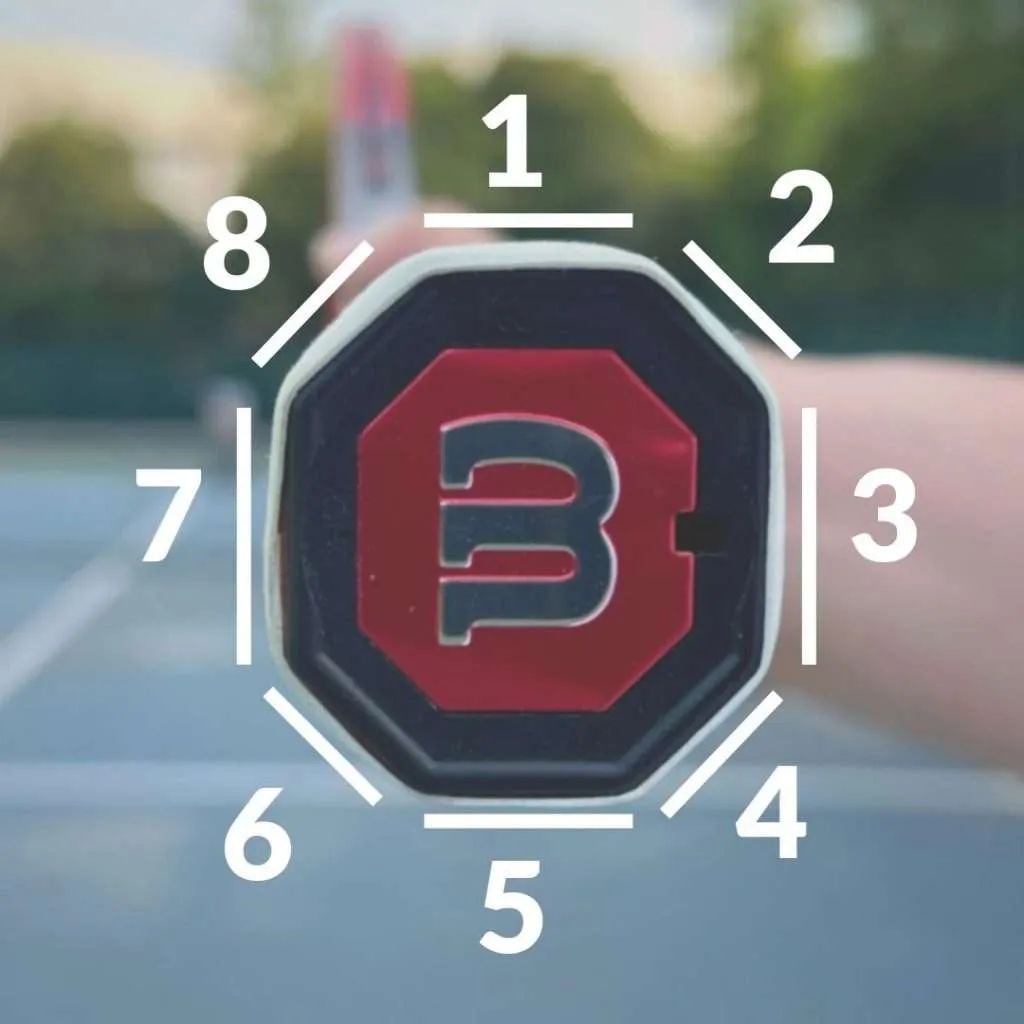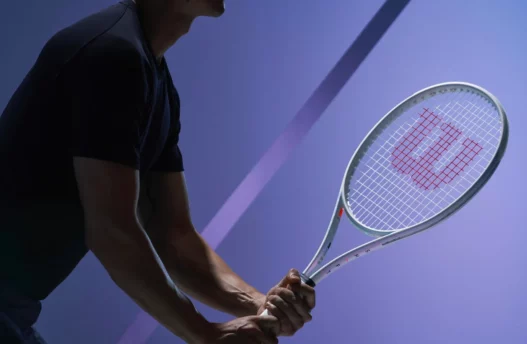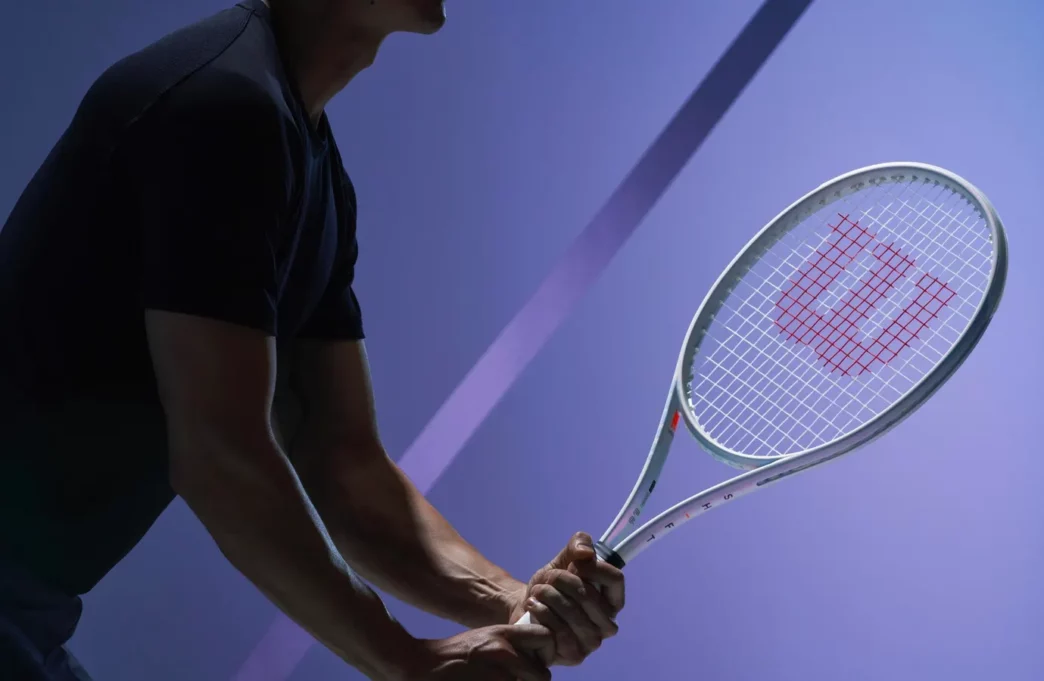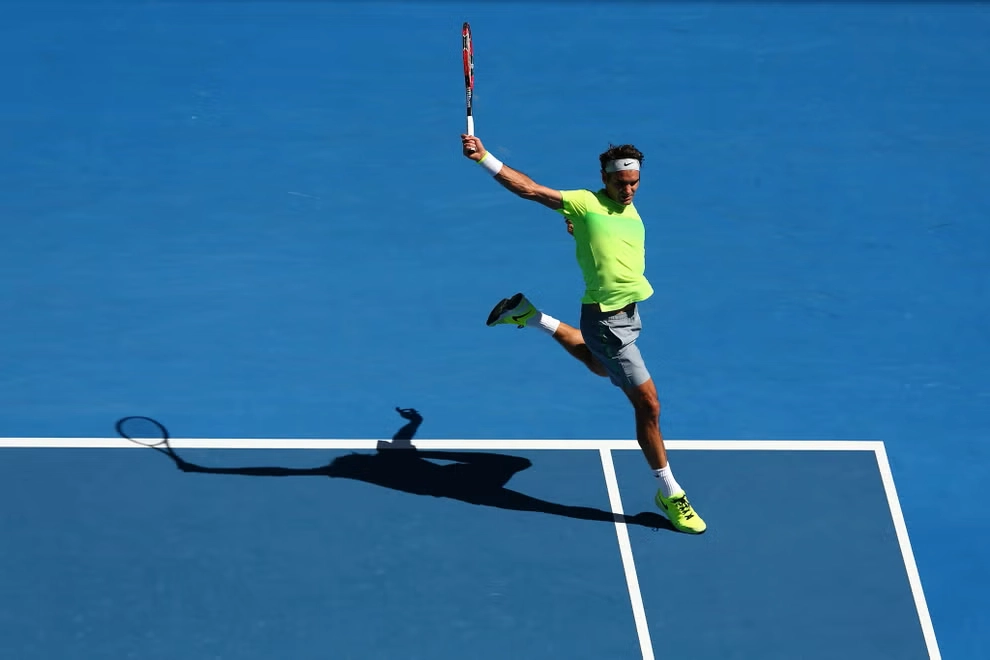Tennis, at its core, is a game of precision, strategy, and adaptability. Every stroke has its own story, and each technique is deeply connected to the evolution of the game over decades. Among these, the forehand grip stands as one of the most critical elements of a player’s arsenal. How you hold your racket determines your style, power, control, and ability to adapt to different surfaces and opponents.
While forehands may seem natural to any tennis player, the grip that governs this essential shot varies widely among players, from beginners learning the basics to professionals mastering the subtleties. The choice of grip fundamentally shapes a player’s game and can make or break a rally. This guide will take you through the three most widely used forehand grips in tennis: Eastern, Semi-Western, and Western. We’ll look at their evolution, how to master them, and the distinct advantages and challenges each brings.
But before we dive into the specifics of these grips, let’s first understand the fundamental role grip plays in the mechanics of tennis.
The Foundation of the Forehand: The Role of Grip in Tennis Mechanics
To truly grasp the impact of a tennis grip, you must first understand the racket’s bevels. A racket handle has eight flat, angled surfaces, or bevels, which serve as the contact point for your fingers. These bevels create slight variations in your grip, leading to different swing mechanics and shot outcomes. The placement of your index knuckle on a specific bevel defines whether you have an Eastern, Semi-Western, or Western grip. Each grip changes the racket’s angle, influencing the amount of topspin, power, and control you can generate.
In tennis, forehand grips evolve as players progress. Beginners may start with an Eastern grip for its simplicity and versatility, but as they become more advanced, they often experiment with Semi-Western and Western grips, which offer more topspin and control at the expense of some power.
Understanding these grips is not merely about learning how to hold the racket; it’s about embracing the evolution of tennis, from Pete Sampras’s booming flat forehands to Rafael Nadal’s topspin-heavy strokes.
Eastern Forehand Grip: The Foundation of Power and Precision

The Eastern forehand grip is often referred to as the “traditional” grip, and for good reason. It was widely used by the tennis greats of the 20th century, like Björn Borg, Pete Sampras, and more recently, Roger Federer. This grip is an excellent starting point for beginners because it strikes a balance between power and control. To form the Eastern grip, place the base knuckle of your index finger on the third bevel of the racket handle, creating a natural, comfortable grip.
Historical Context of the Eastern Grip
In the earlier days of tennis, the game was played predominantly on grass courts, which led to a faster, lower-bouncing ball. Players needed a grip that allowed them to hit through the ball while generating flat shots with depth. The Eastern grip became the dominant style, giving players the ability to hit the ball cleanly and with power, maximizing their advantage on these faster surfaces. This grip provided a lot of control and was suited for the serve-and-volley play style that characterized much of professional tennis in the 1970s and 1980s.
As tennis transitioned to hard courts and clay, the Eastern grip evolved but remained prevalent. Players like Roger Federer have used variations of the Eastern grip throughout their careers, especially when playing on faster surfaces like Wimbledon’s grass courts, where the lower bounce complements a flatter shot trajectory.
Advantages of the Eastern Grip
• Versatility: The Eastern grip allows for both power and precision. It is excellent for players who prefer to hit with depth and power from the baseline, taking advantage of the low ball bounces on faster surfaces.
• Easier for Beginners: Because the grip keeps the racket face relatively flat at impact, it helps players hit cleaner, flatter shots, making it easier to develop proper mechanics early in their training.
• Effective on Fast Surfaces: This grip works particularly well on faster surfaces like hard and grass courts, where lower-bouncing balls allow players to strike early and aggressively.
Challenges of the Eastern Grip
• Limited Topspin: While the Eastern grip excels at generating power, it lacks the capacity for topspin compared to the Semi-Western and Western grips. Players looking to dominate with heavy topspin may find this grip limiting, especially on slower surfaces like clay.
• Difficulty Handling High Balls: On slower surfaces like clay, where balls tend to bounce higher, the Eastern grip requires significant adjustment. Without topspin, players may find it difficult to control these high balls, which can lead to unforced errors.
Player Profile: The Eastern grip is ideal for intermediate to advanced players who prefer flat, penetrating groundstrokes and wish to dominate fast rallies. It’s particularly effective for players who excel at taking the ball early and hitting down the line. Some of the greatest players in history, including Pete Sampras and Stefan Edberg, have used variations of the Eastern grip.
The Semi-Western Grip: The Modern Baseline King
The Semi-Western forehand grip is the most widely used grip among today’s top professional players. It allows players to hit with powerful topspin, making it easier to control the ball during long rallies and on slower surfaces. To form this grip, place the base knuckle of your index finger on the fourth bevel of the racket handle, rotating your wrist slightly further under the racket compared to the Eastern grip.

Evolution of the Semi-Western Grip
The rise of the Semi-Western grip coincides with the evolution of tennis surfaces and racket technology. As hard courts and clay courts became more prevalent, players needed a grip that allowed them to generate more topspin, control the ball’s trajectory, and handle higher bounces. Additionally, the introduction of polyester strings in the 1990s revolutionized how players generated spin, making the Semi-Western grip more effective than ever before.
Players like Rafael Nadal and Novak Djokovic are prime examples of professionals who have mastered the Semi-Western grip, using it to great effect on all surfaces. Nadal, in particular, has made heavy topspin his trademark, allowing him to dominate the clay courts of Roland Garros with ease.
Advantages of the Semi-Western Grip
• Increased Topspin: The Semi-Western grip allows for more topspin than the Eastern grip, giving players the ability to hit heavy, high-bouncing shots. This is especially useful on slower surfaces like clay, where the ball needs extra topspin to stay in play.
• Control Over High Balls: One of the Semi-Western grip’s greatest strengths is its ability to handle high-bouncing balls. The grip’s slightly closed racket face allows players to get under the ball and create topspin, giving them more control over shots.
• Versatility: Unlike the Western grip, the Semi-Western grip is versatile across all surfaces, making it the most popular choice for modern players. Whether you’re playing on clay, hard courts, or even grass, the Semi-Western grip provides a balance of power, control, and spin.
Challenges of the Semi-Western Grip
• Less Flat Power: While the Semi-Western grip provides excellent topspin, it sacrifices some of the flat power that players get with the Eastern grip. Players who rely on heavy, flat forehands may find this grip less suitable for hitting winners from the baseline.
• Timing Required: The grip’s semi-closed face requires precise timing and technique to generate spin and keep the ball in play. Players need to have excellent footwork and positioning to avoid sending shots long or into the net.
Player Profile: The Semi-Western grip is ideal for baseline players who rely on heavy topspin to dominate rallies and keep opponents on the defensive. Players like Novak Djokovic and Rafael Nadal have used this grip to great success, utilizing its topspin potential to control rallies from the baseline. The Semi-Western grip is particularly effective for players who enjoy long, grinding rallies on slow surfaces.
Western Forehand Grip: The Extreme Topspin Machine
The Western grip is the most extreme of all the forehand grips and is primarily used by players who rely on heavy topspin to control their rallies. To form the Western grip, place the base knuckle of your index finger on the fifth bevel of the racket handle, positioning your wrist under the racket. This extreme wrist position allows players to get under the ball and generate massive topspin.

History of the Western Grip
The Western grip emerged as tennis transitioned to slower surfaces, particularly clay courts. The slower bounce on clay gave players more time to wind up their swings and generate topspin. Players like Jim Courier and, more recently, Dominic Thiem, have used the Western grip to generate high-bouncing topspin shots that push their opponents back behind the baseline.
Advantages of the Western Grip
Maximum Topspin: No other grip allows for more topspin than the Western grip. With your wrist positioned far beneath the racket, you can aggressively brush up the back of the ball. This results in high-bouncing, spinning shots that push opponents back behind the baseline, keeping them on the defensive. This ability to generate topspin provides incredible margin over the net, ensuring the ball drops back down into the court even on powerful swings.
• Control on Clay: The Western grip shines on clay, where high bounces and long rallies are the norm. By imparting heavy topspin, the ball bounces higher and deeper, making it difficult for opponents to attack. On this slower surface, players using the Western grip can grind from the baseline, rallying with consistency while keeping their shots deep in the court.
• Consistency: By generating excessive topspin, Western grip players can hit the ball hard and maintain control over the flight path. This allows them to play a more consistent game, particularly during long baseline rallies where control and spin are paramount.
Challenges of the Western Grip
• Less Effective on Faster Surfaces: The Western grip’s extreme wrist position is ideal for generating topspin on slower surfaces like clay but can be a liability on faster courts. Surfaces such as grass or indoor hard courts tend to favor flatter shots, and the Western grip, with its extreme topspin, may reduce the effectiveness of fast, penetrating groundstrokes that are needed on such surfaces.
• Difficult to Hit Flat Shots: While the Western grip excels at topspin, it is challenging to hit flat, hard shots. Players who rely heavily on this grip may struggle to hit winners or penetrate through an opponent’s defense on faster courts, as the ball tends to dip quickly due to the heavy topspin.
• Strain on the Wrist and Arm: The extreme wrist angle required for the Western grip can place considerable strain on the wrist and forearm. This can lead to overuse injuries, especially during long matches or when switching between different grips mid-game. Players using the Western grip must ensure their wrist strength and timing are well-developed to handle the demands of this extreme position.
Player Profile: The Western grip is a favorite among baseline grinders who play with heavy topspin and prefer to control the point from behind the baseline. Dominic Thiem and Diego Schwartzman are examples of players who thrive with this grip, particularly on slower surfaces like clay. The Western grip is ideal for players who want to engage in long rallies and push their opponents deep behind the baseline with high-bouncing, heavily spun shots.
Finding the Right Grip for You: Key Considerations
As a tennis player, the grip you choose for your forehand depends on several factors: your playing style, the surfaces you play on most frequently, and your level of experience. Here are a few things to consider when deciding which grip suits you best:
• Playing Style: If you’re an aggressive baseliner who likes to take the ball early and hit flat, powerful shots, the Eastern grip might suit you best. This grip allows you to hit through the ball with precision, making it a good choice for players who want to dominate fast surfaces like hard courts or grass.
• Spin Preference: If you enjoy generating topspin and playing with margin over the net, the Semi-Western or Western grip might be more appropriate. Players who rely on topspin to control their shots, especially on slower surfaces like clay, will benefit from these grips. The Semi-Western grip offers a good balance between topspin and versatility, while the Western grip is best for players who want maximum spin and are comfortable rallying from the baseline.
• Surface Adaptability: The choice of grip can also depend on the surfaces you play on most often. For hard and grass courts, where speed and flatter shots are more effective, the Eastern grip provides excellent control and power. For clay courts or slower hard courts, the Semi-Western or Western grip will give you the topspin needed to handle higher bounces and engage in longer rallies.
• Physical Comfort: Some grips, particularly the Western grip, place more strain on the wrist and forearm due to their extreme positions. If you’ve experienced wrist pain or are concerned about injury, the Eastern grip or a more moderate Semi-Western grip might be more suitable for you.
Evolving Your Forehand Grip: When and How to Make Adjustments
As you progress as a tennis player, your grip will likely evolve. Many players start with an Eastern grip to develop power and consistency, but as they gain more experience, they often transition to the Semi-Western or even Western grips to add more topspin to their game. The key is understanding when and why to make these adjustments:
• Mastering the Basics: For beginners, it’s essential to focus on mastering the basic mechanics of the forehand stroke before experimenting with more advanced grips. The Eastern grip is the perfect starting point, as it provides a neutral position that emphasizes clean contact and proper technique.
• Adding Spin as You Progress: As you advance, you may find that you need more topspin to keep the ball in play during long rallies, especially on slower surfaces. Transitioning to the Semi-Western grip allows you to generate topspin while still maintaining a balance of power and control. Many intermediate players make this switch as they develop a more aggressive baseline game.
• Exploring Advanced Techniques: For advanced players who are comfortable hitting with heavy topspin, the Western grip offers the highest level of spin potential. However, this grip requires exceptional timing and wrist strength to manage effectively. If you find that you’re engaging in long baseline rallies and need to keep your opponent pinned behind the baseline, experimenting with the Western grip might be worth the effort.
The Future of Forehand Grips: Trends and Innovations
As tennis continues to evolve, so too do the techniques and tools that players use to gain an edge on the court. In recent years, we’ve seen the rise of hybrid grips, which blend the best elements of traditional grips to create new possibilities for players:
• Hybrid Grips: Some players experiment with variations that combine elements of the Semi-Western and Western grips to create an ultra-topsin-heavy game, but with slightly less strain on the wrist. These hybrid grips allow players to adapt their forehand to different surfaces and playing conditions without having to completely change their grip.
• Technology-Driven Adjustments: Advances in racket technology, string composition, and player fitness have made it easier for players to generate topspin with less effort. As a result, more players are gravitating towards the Semi-Western grip, which offers the ideal combination of topspin, power, and control in modern tennis.
• The Influence of the Pros: As players like Rafael Nadal and Dominic Thiem continue to dominate with heavy topspin and baseline play, younger players are adopting their grips and techniques to emulate their success. The popularity of the Semi-Western and Western grips is likely to continue growing as more players prioritize topspin and long rallies in their game.
Conclusion: Your Forehand Grip, Your Game
Choosing the right forehand grip is a personal decision that depends on your style, preferences, and aspirations as a player. Whether you’re a beginner looking to build solid fundamentals with the Eastern grip, an intermediate player seeking more topspin with the Semi-Western grip, or an advanced player dominating from the baseline with the Western grip, your forehand grip is the key to unlocking your full potential on the court.
Experiment with different grips, adjust based on the surface and playing conditions, and remember that tennis is a game of evolution. Your forehand, like your grip, will change and improve as you continue to play and refine your technique. So, get out there, try different grips, and find the one that best suits your game!






















